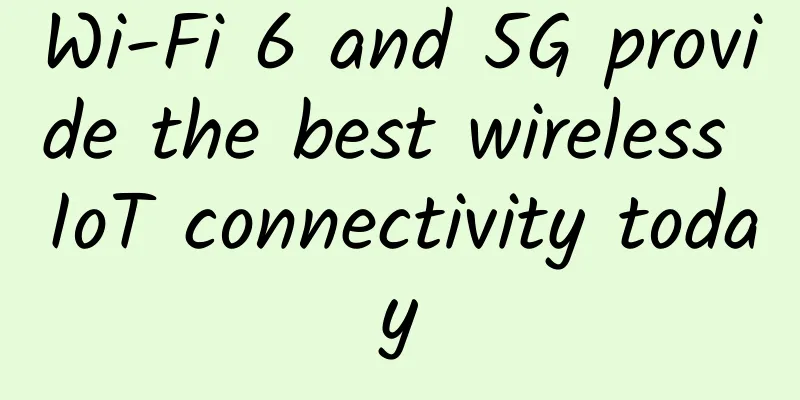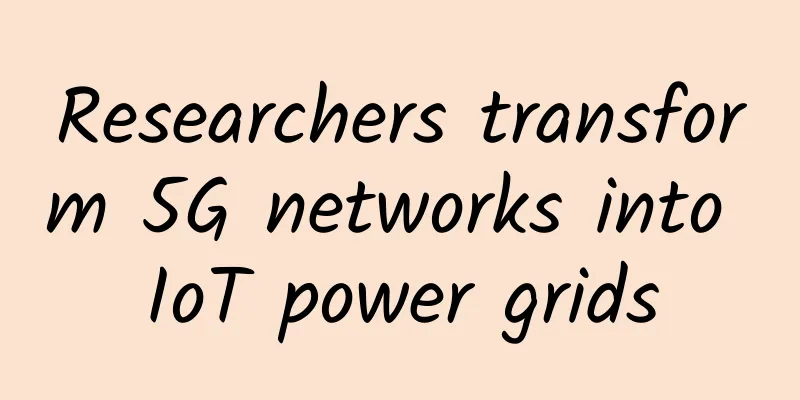Wi-Fi 6 and 5G provide the best wireless IoT connectivity today

|
IoT innovation has seen the increasing adoption of Wi-Fi to power everything from factory robots to vending machines. The higher throughput offered by Wi-Fi 6 demonstrates how the technology can be adapted for a range of use cases. In some cases, this makes Wi-Fi a more attractive connectivity option than cellular networks because it brings the same wireless benefits but at a lower cost. The main advantage of Wi-Fi 7 is that it provides extremely high throughput using the 2.4GHz, 5GHz, and 6GHz bands. The migration to Wi-Fi 7 will bring a significant increase in overall capacity while reducing latency and increasing speeds. Wi-Fi 7 represents a significant change from Wi-Fi 6, which itself offered fast connections. The specification suggests that Wi-Fi 7 will deliver speeds of up to 46Gbps to a single client, dwarfing the already-speedy 9.6Gbps of Wi-Fi 6. However, the Wi-Fi 7 specification won't be finalized until 2024, and the technology is still under development. Today, this leaves us with Wi-Fi 6 – which is not a bad thing, as the technology offers an excellent choice for connecting devices with relatively low latency, fast speeds, high device density, and a future upgrade path. In many ways, Wi-Fi 6 laid the foundation for Wi-Fi 7, as it allowed the market to recognize that Wi-Fi is an excellent choice for many deployment scenarios. Wi-Fi 6 is powerful enough to support innovative use cases such as automated guided vehicles, industrial robots, and many other applications. In indoor locations such as stadiums, large venues, offices, hotels, etc., Wi-Fi 6 has attractive attributes. In addition, the technology is being used in the automotive industry to support manufacturers' applications such as infotainment, monitoring, maintenance, and upgrades, while increasing the personalization of vehicle features. These advantages have led to Wi-Fi 6 adoption beginning to dominate deployments. IDC estimates that within the next two years, Wi-Fi 6 will account for 79% of all Wi-Fi product shipments. The company expects Wi-Fi 6 device shipments to reach 2 billion in 2021, accounting for more than 50% of all Wi-Fi shipments. The company expects Wi-Fi 6 product shipments to exceed 3.5 billion in 2022; nearly 20% of Wi-Fi 6 devices this year will be capable of 6 GHz. Comparing Deloitte's 2021 study on advanced wireless adoption with the company's 2020 study shows the momentum behind Wi-Fi 6 is swinging. The 2020 study found that U.S. networking executives still viewed 4G/Long Term Evolution (LTE) and current or previous versions of Wi-Fi as the most critical wireless technologies for their business; most believed 5G and Wi-Fi 6 would arrive within the next few years. Attitudes have shifted quickly, with global network decision makers now viewing 5G and Wi-Fi 6 as the most important wireless technologies in their business plans. Deloitte found that Wi-Fi 6 adoption is well beyond the planning stage, with two-thirds of respondent organizations already piloting or deploying Wi-Fi 6 solutions, while 58% are doing the same for 5G. Enterprise applications are expected to be a significant part of the Wi-Fi 6 market, with analyst firm ABI Research predicting that Wi-Fi 6 enterprise access point shipments will increase from 4.3 million in 2021 to 13.4 million in 2026, a CAGR of 25%. Industry 4.0, smart manufacturing, connected cars, and infotainment industries all want to take advantage of Wi-Fi 6 and 5G. Therefore, it is important to evaluate both technologies side by side and recognize that each has compelling features to bring to the enterprise. This means that both technologies will coexist; each will play an important role in the future of wireless. And, unlike past generations of wireless technology, it is not an either-or decision. 5G cellular and Wi-Fi 6 — and later Wi-Fi 7 and 6G — networks will be able to interoperate and be viewed as complementary technologies in the wireless ecosystem. The Deloitte study found that organizations said they prefer Wi-Fi 6 for indoor, campus and fixed network situations, while they will turn to 5G for outdoor, off-campus and mobile networks. Parallel adoption of these technologies makes sense, with 45% of survey respondents already deploying Wi-Fi 6 and 5G in their business or conducting pilots/trials, and another 35% actively preparing to use both technologies simultaneously. Almost all expect their organizations to use both 5G and Wi-Fi 6 in the next two to three years. Projected investments reflect co-adoption, with Deloitte reporting that from 2021 to 2024, these organizations expect to split wireless spending between Wi-Fi (48%) and cellular technologies (52%). In the automotive market, Quectel sees a lot of applications for Wi-Fi 6, with access points designed to support gigabit in-car hotspots and provide efficient Wi-Fi connectivity throughout the vehicle; supporting ultra-high-definition (ultra-HD) video streaming on multiple displays, screen mirroring for compatible devices, and wireless backup cameras. Wi-Fi 6 also features full MIMO client capabilities and is designed to extend range at high data rates to connect to external access points for automotive services such as vehicle diagnostics, software updates and automatic check-in upon arrival at the dealership. In addition, the technology will provide improved connectivity and an enhanced in-car experience. As vehicle connectivity continues to evolve from 4G to 5G, Wi-Fi 6 is an integral part of the connectivity evolution as it enables seamless connectivity between multiple devices in crowded environments. Even though Wi-Fi 7 is already leading the way in development, Wi-Fi 6 is the next generation of Wi-Fi and will therefore exist in lockstep with the development of the IoT industry. As IoT device deployments reach scale, more and more devices require high throughput, such as virtual reality devices. Other applications require low latency, such as industrial control, or require low power consumption, such as battery-powered applications. Wi-Fi 6 is well-positioned to meet these needs and cope with the dramatically increased device density required in the era of billions of devices. By using OFDMA, MU-MIMO, TWT, BSS coloring, and spatial reuse technologies, Wi-Fi 6 products achieve significantly improved performance and address density and interference issues. When aligned with 5G, IoT organizations can adopt Wi-Fi 6 and access the most appropriate connectivity for their deployments, confident that each technology can coexist and will support devices for the long term. We’re in the age of 5G and Wi-Fi 6 today, but this sets the scene and provides a sound foundation and upgrade path for 6G and Wi-Fi 7 in the future. |
<<: Three ways 5G will change manufacturing
>>: Report shows 33% of enterprises plan to deploy Wi-Fi 7 by 2024
Recommend
The love-hate relationship between video surveillance networks and IPv6
Among the three major layers of the Internet of T...
DesiVPS launches NVMe hard drive series Los Angeles VPS starting from $20 per year
DesiVPS sent a new email saying that it has launc...
TMThosting: VPS monthly payment 15% off annual payment 20% off, dedicated server monthly payment 95% off annual payment 20% off, Seattle/Dallas data center
TMThosting has launched the Dedicated Server &...
GigsGigsCloud:$16/month KVM-1GB/30GB/1TB/1.6T High Defense/Los Angeles CN2 GIA+AS9929
GigsGigsCloud is a long-established foreign hosti...
Justg: South Africa cn2 gia line (three networks) VPS annual payment starting at $39.99, 500M bandwidth, KVM architecture
Justg is a relatively new foreign VPS service pro...
V5.NET: Hong Kong cloud server 60% off from 36 yuan/month, Hong Kong independent server 60% off from 390 yuan/month
V5.NET upgraded its business management system at...
Taming your WAN: Applying SDN to the WAN
The network should respond to the needs of users ...
2G network withdrawal has 200 million potential users, elderly mobile phones have pain points and no market
[[343834]] I have tried According to statistics f...
3000 words on TCP protocol, handshake is not as simple as you think
Last time I talked about the UDP protocol. From t...
Microsoft Build 2017: Officially released Visual Studio for Mac
On the evening of May 10th, Beijing time, Microso...
Σco Time | Digital transformation of the healthcare industry after the epidemic from the perspective of ICT
[51CTO.com original article] During the critical ...
Friendhosting's 13th anniversary: 50% off on all VPS, 10 data centers with unlimited traffic, starting at 16 euros per year
Friendhosting has launched a promotion for its 13...
Let's talk about WiFi6 security technology
1. WiFi6 Overview In 2018, in order to better bui...
Things about WKWebView on iOS
[[413463]] Background Students who are familiar w...
[Security Alert] Baota Panel suspected vulnerability or Nginx abnormality
For the convenience of many friends, panels are d...









